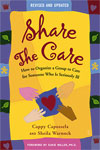Although my 91-year-old father came through his throat biopsy with a clean bill of health, a combination of general anesthesia and exhaustion from a conference he had attended the previous week kicked his immune system into disorder. He collapsed at home a week ago, and emergency medics had to break down the back door to rush him to the hospital (thank God Dad was wearing one of those beeper necklaces). Diagnosis: double pneumonia!
“I’ve had walking pneumonia before,” said my dad soberly.
“Well, now you’ve got falling-down pneumonia,” said his sassy nurse.
My father remains hospitalized under the attentive care of my sister and brother, as well as numerous doctors and nurses. There were two awful scares earlier this week, but now he appears to be responding nicely to treatment.
Next week, I’ll be filing a few blog items from sunny Orangeburg, S.C., where I’ll be helping to take care of him while also cheerfully enduring the slow dial-up connection. I am happy to go down there; it is Dad who is putting up some resistance. He is adamant about continuing to live alone in the house with my late mother’s Yorkshire terrier, Trevor (who keeps staring at my siblings in Dad’s absence as though they were rude imposters).
 All this has reminded me to ask you: Do you know about Share the Care? If not, I am linking you to a wonderful website where you can read about it. Share the Care helps friends and family of the terminally or seriously ill create an efficient caretaking network. The original “Share the Care” book was written by two women who had supported a friend through a terminal illness with the aid of a “funny family” of friends who basically assumed every conceivable task for her, from shopping to cleaning to getting her to the hospital and back for treatment. The two founders–Sheila Warnock and Cappy Caposella–were so moved by what a band of previously disconnected people could do, they started promoting the concept nationally. They got a lot of good press (I wrote a piece about them for Redbook). In time, they felt gratified that they had helped so many people with their practical tips on how to organize a caretaking group.
All this has reminded me to ask you: Do you know about Share the Care? If not, I am linking you to a wonderful website where you can read about it. Share the Care helps friends and family of the terminally or seriously ill create an efficient caretaking network. The original “Share the Care” book was written by two women who had supported a friend through a terminal illness with the aid of a “funny family” of friends who basically assumed every conceivable task for her, from shopping to cleaning to getting her to the hospital and back for treatment. The two founders–Sheila Warnock and Cappy Caposella–were so moved by what a band of previously disconnected people could do, they started promoting the concept nationally. They got a lot of good press (I wrote a piece about them for Redbook). In time, they felt gratified that they had helped so many people with their practical tips on how to organize a caretaking group.
Then in a tragic twist of fate, Caposella became ill with a cancerous brain tumor, and co-author Warnock formed the ultimate network of round-the-clock caretaking friends. Sadly, Caposella’s father also developed brain cancer around the same time, and they both died within twelve hours of each other.
Warnock swam in grief for a time, but has, with belief in this system, seen the book into its revised second edition and continued the website. The point is, everybody wants to volunteer to some extent; no one should be left to take care of another all alone. The bigger the group, the better. And as you’ll learn, the care isn’t only for the terminally ill. You can gather friends to help a pregnant pal on bedrest or to assist someone hospitalized with two broken legs.
With family relations strained by great distances, “funny families” (that is, diverse people unified in their love of one needy person) are often necessary. Share the Care’s website even provides downloadable forms to distribute when you’re figuring out exactly what to do first.
I’m not sure how I’ll recruit friends and church ladies to check in on my father. But my siblings and I will develop some kind of system. Dad wants to preserve his privacy and dignity. With so many people in his town who love him, it will be a challenge to funnel their energies and not to pile too many casserole dishes into the freezer in the coming days.
